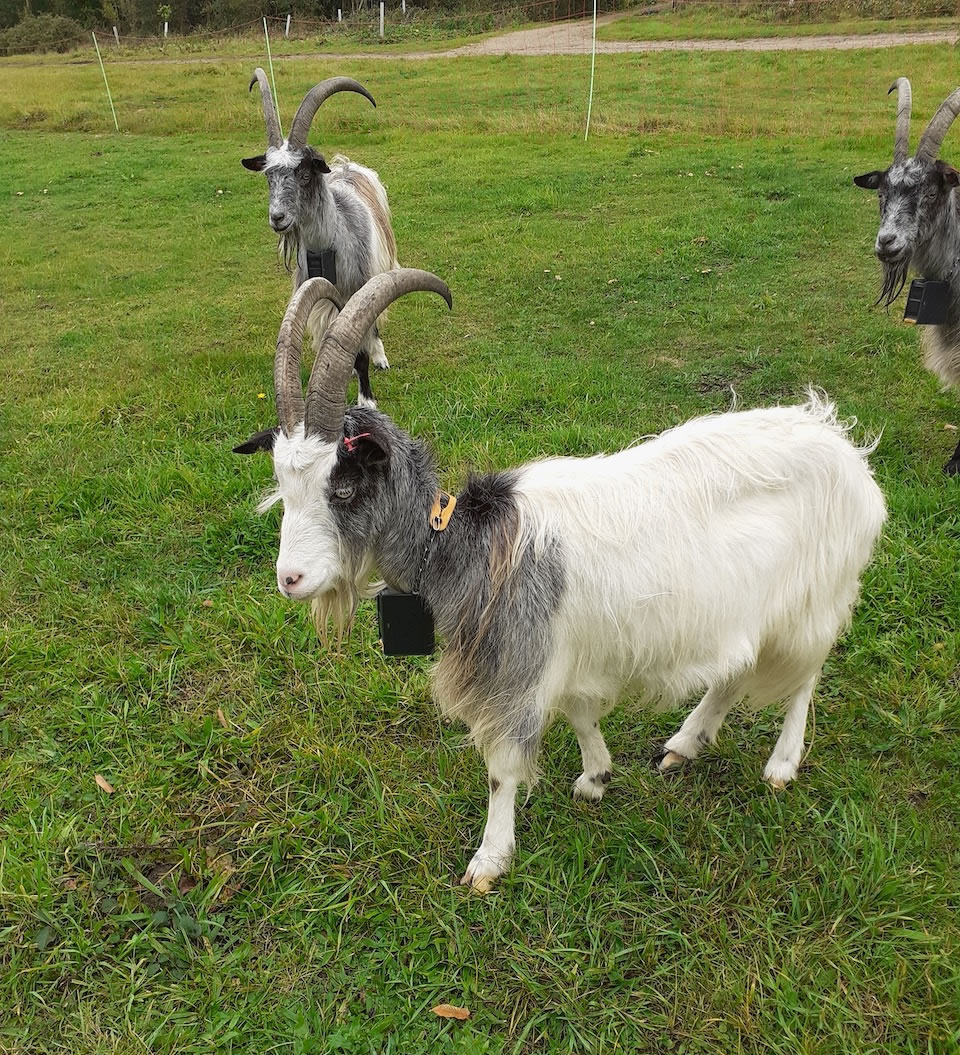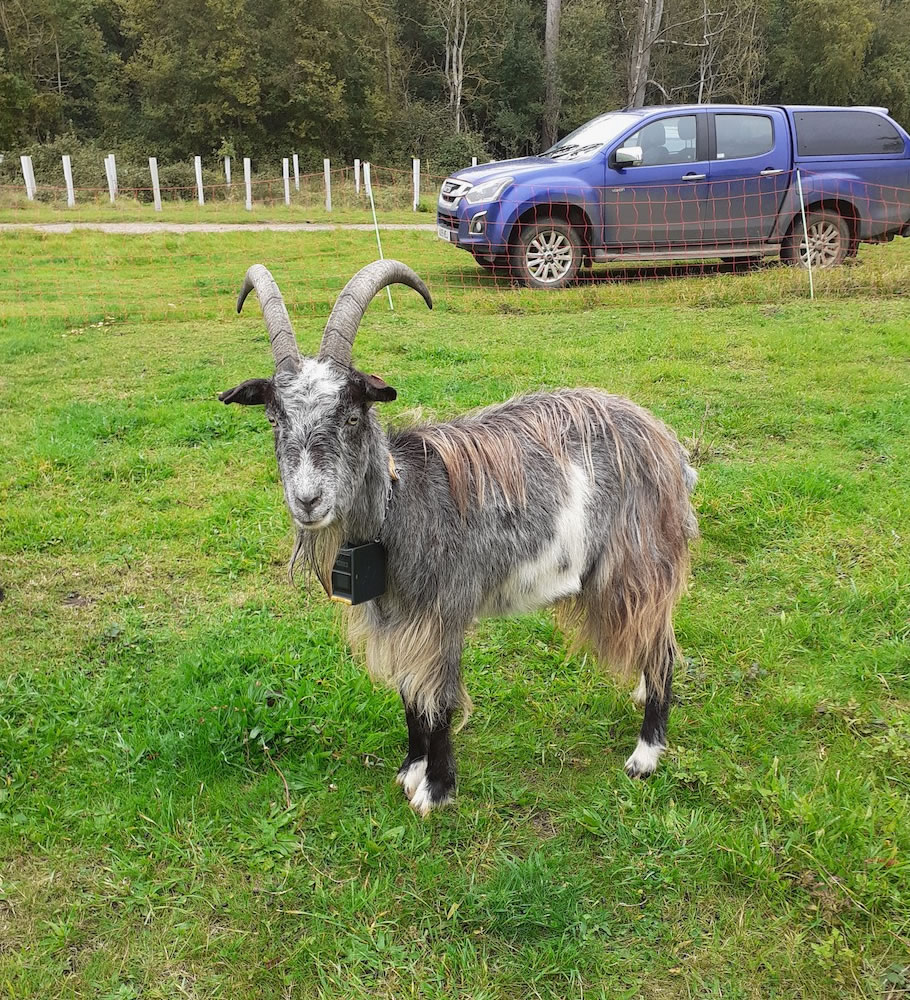Virtual fencing
The Challenge
Installing fencing on sites that require conservation grazing to help conserve uncommon habitats and species, or to help mimic natural processes within landscape-scale re-wilding projects, can often be prohibitively expensive due to the difficult nature of the terrain (too steep or too wet), problems with access for machinery or restrictions associated with land tenure for example common land.
Even where secure perimeter stock fencing is in place, it is often desirable to have internal grazing units that can allow for the development of more complex or flexible regimes to maximise the impact upon target wildlife species. For example to focus the efforts of goats on stands of scrub within an area of grassland or to exclude grazing at certain times of the year to promote flowering and foraging opportunities in selected locations.
Virtual fencing systems have the potential to greatly assist conservation grazing efforts, so we were keen to test the technology thoroughly to understand its technical capabilities and to avoid any welfare issues.
The Results
Legacy Grazing were the first organisation in the UK to acquire Nofence virtual fence technology in 2019 with a trial commencing in 2020 on a small piece of semi-improved acid grassland within an area of historic parkland. The trial was supported by funding provided by the Land of the Fanns Partnership Scheme.
 Following a period of spring/summer grazing within an enclosure bounded by a 1.2 metre high electric fence, in August 2020 the collars were fitted to a small flock of our Cheviot Goats, and the virtual fence drawn to exclude part of the previously grazed area within the enclosure. The goats very quickly learnt to respect the virtual fence and when they heard the audible cue they usually turned round before the electric pulse was given. The trial continued until December 2020.
Following a period of spring/summer grazing within an enclosure bounded by a 1.2 metre high electric fence, in August 2020 the collars were fitted to a small flock of our Cheviot Goats, and the virtual fence drawn to exclude part of the previously grazed area within the enclosure. The goats very quickly learnt to respect the virtual fence and when they heard the audible cue they usually turned round before the electric pulse was given. The trial continued until December 2020.
No goats crossed the virtual fence boundary. Prior to the virtual fence being turned-on, one goat did get over the traditional electric fence in search of sweet chestnuts that were on the ground.
The batteries maintained sufficient power (being topped-up by the integrated solar panels) during the summer and early autumn, but did need changing after power declined in November. Changing the batteries is a simple process and can be done while the collars are still on the goats.
No welfare issues were apparent during the trial. However, one goat repeatedly walked toward an oak tree that had dropped acorns, but turned back before getting a pulse. This shows the system worked, but also showed that if there is something attractive nearby, they will be drawn towards it.
 During the trial the virtual fenced area was redrawn a number of times to alter the area available for grazing at any one time. In addition, a small number of internal exclusion zones were established to prevent damage to young oak trees.
During the trial the virtual fenced area was redrawn a number of times to alter the area available for grazing at any one time. In addition, a small number of internal exclusion zones were established to prevent damage to young oak trees.
From a stock management point of view, it is advisable to leave a significant distance between any 'attraction' and the virtual fence containing the animals. Examples of attractions include a tempting food source or animals on heat.
The trial highlighted the fact that the boundary isn’t fixed. The warning cues and pulse come after crossing the virtual fence, and the distance between the fence and the point at which an audible warning/pulse is given varies depending on how fast the animal is moving. A significant buffer is therefore advisable if the system is to be used near roads.
In summary, the system worked well, was reliable, kept the stock in and needed little work after the collars were fitted except for changing batteries. Having proved the system works well, we are confident it will deliver significant benefits for conservation grazing.